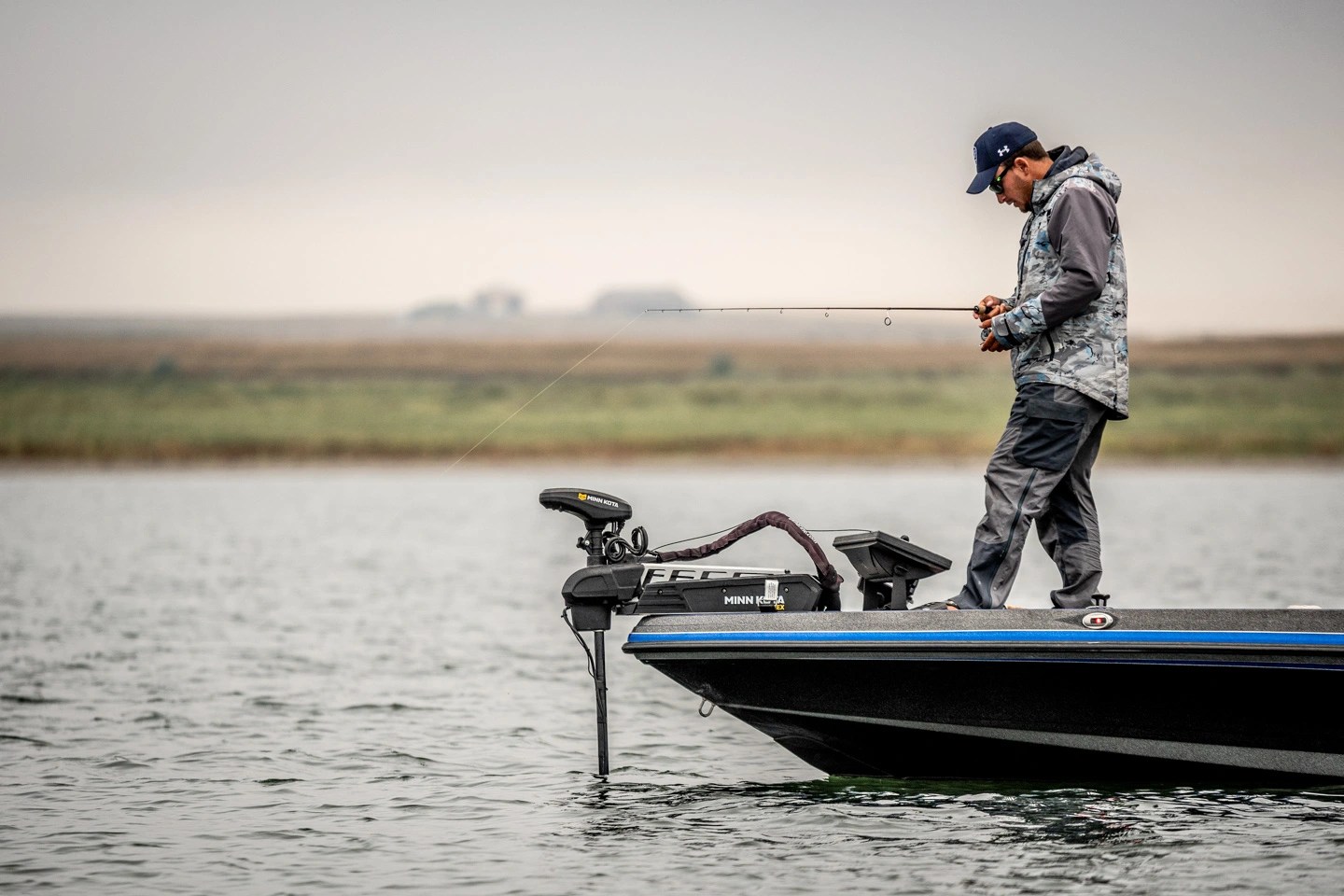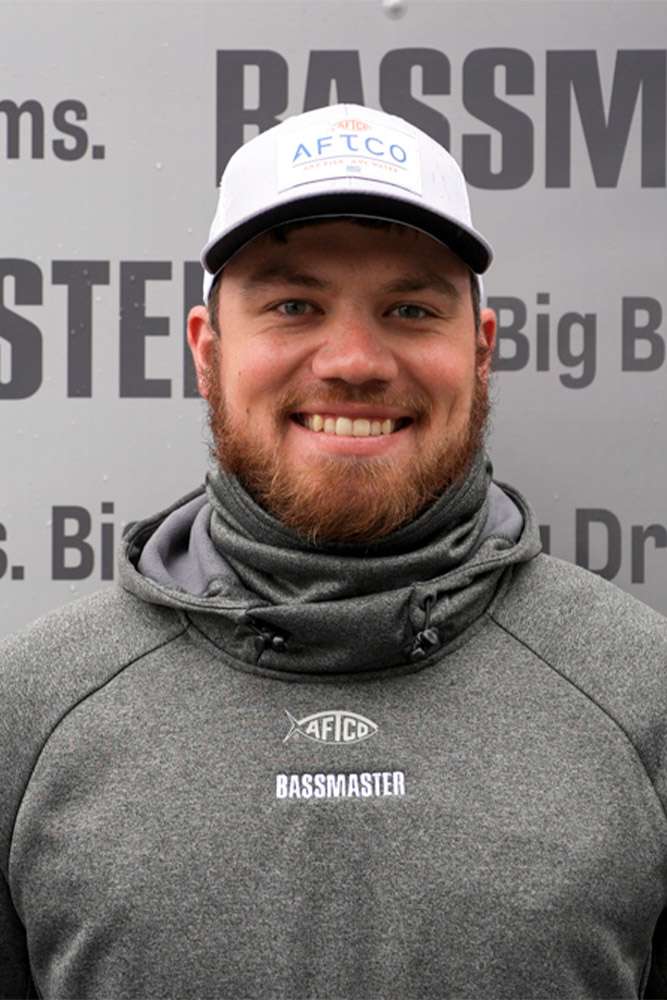
MOBRIDGE, S.D.– Chris Johnston suffered from forward-facing frustrations on Semi-Final Saturday of the Guaranteed Rate Bassmaster Elite at Lake Oahe. It wasn’t because the Ontario, Canada native couldn’t find groups of smallmouth with the technology, but rather he couldn’t get them to bite when he did find them.
“It was one of the worst days I have ever had for them not biting on forward facing,” he said. “It is great when you can see them and they are biting like they are supposed to. But it is very frustrating because I can see them and they wouldn’t bite.”
After taking the lead on Day 2, Johnston dropped to third after the third day of competition with a total of 51 pounds, 8 ounces, bringing 13-12 to the scales after landing 18-15 and 18-13 the first two days. Even still, Johnston is squarely in contention for his second career blue trophy.
Johnston had been relying on one area that produced quality bites, but he anticipated at some point it wasn’t going to reload with smallmouth the way he wanted. Sure enough, Johnston found little activity in that area to start Day 3, and he had to search for new groups of smallies.
That search was productive in the sense he found several schools on his forward-facing sonar, but when it came time to catch them the bass just wouldn’t cooperate.
“Usually when you pull up you can get one or two first thing on the forward-facing if there is a group of them. Then they kind of know you are there and the gig is up,” he said. “These ones, for example, I pulled up and there are 15 of them and I can see them at 90 feet. I threw out and it went down the middle and they all came up to look and followed it down. And normally that is a guarantee, you just wait for one to bite and it was nothing (today). I don’t know what is going on.”
It is the blessing and curse of the new technology that has become a dominant factor in nearly every Elite Series tournament. Finding the bass is one thing, but making them bite is totally different.
On the first day of competition, Johnston estimated his success rate with forward-facing sonar was about 50 percent on the day. That dropped to 25 percent on Day 2 and was dramatically lower than that yesterday.
And when they don’t bite, time becomes an issue.
“Without forward-facing, I would have left an hour sooner. Because I could see them all there, I got sucked in and they still wouldn’t bite,” Johnston said.
But on Lake Oahe, turning the sonar off isn’t an option. The pelagic nature of these smallmouth make them constantly move around and Johnston is able to stick with them easier when he is using the live sonar.
“(Forward-facing) definitely helps,” he said. “These groups move around. So you are always able to have your bait in a high percentage zone and sometimes it does damper it, because you can’t always see all the fish. There are some sitting super close to the bottom and you are casting at the ones you can see and not picking off the ones that are right on bottom.”
Johnston said he has found the bigger groups of smallmouth are harder to make bite, while the smaller, more isolated groups of big ones were easier to catch.
Several things will be working in Johnston’s favor as he works to recover from Day 3. Calm conditions prevailed on Saturday, but the wind is predicted to kick back up from the south on Championship Sunday which should help his bite.
There will also only be nine other Elite pros on the lake, providing him more options and allowing the bass to rest in some of the areas that have been highly pressured.
“Most of these spots are beat up,” Johnston said. “But if they have half a day to let the fish get positioned, you make that one cast on the LiveScope and see two or three you might be able to get them to bite a little better. You will be going to fresh fish.”





